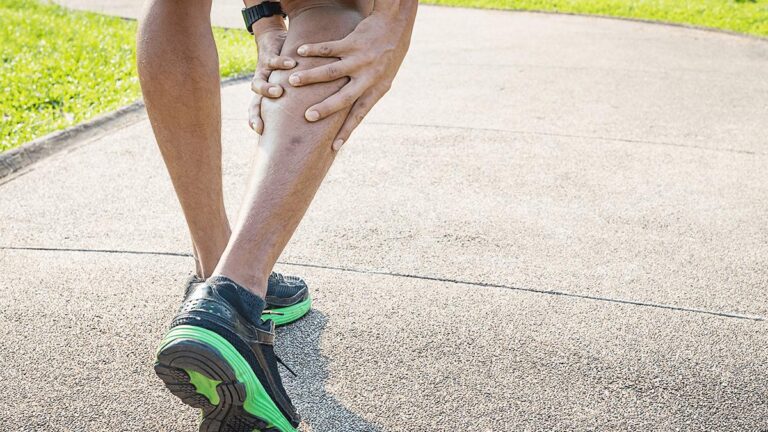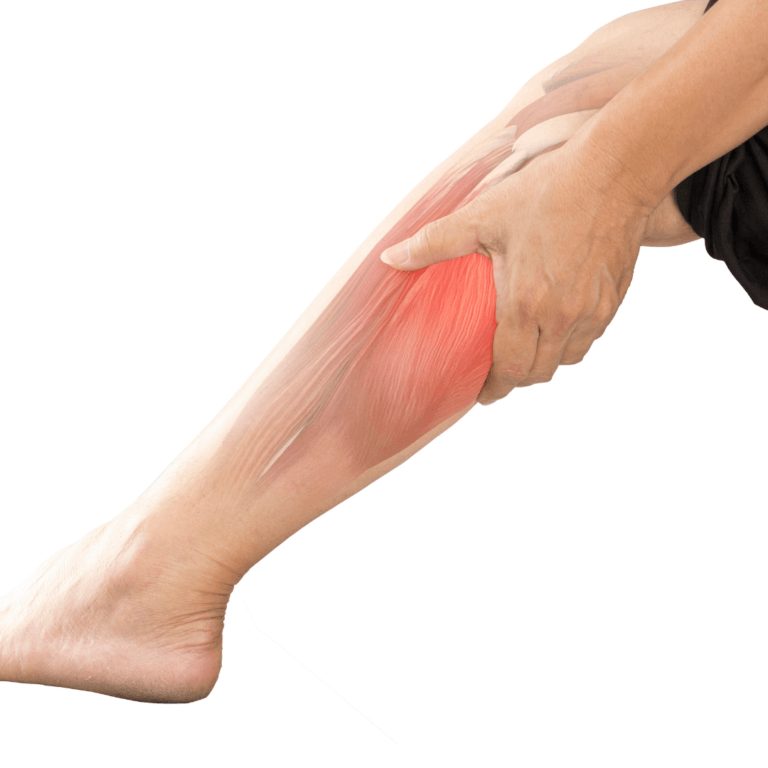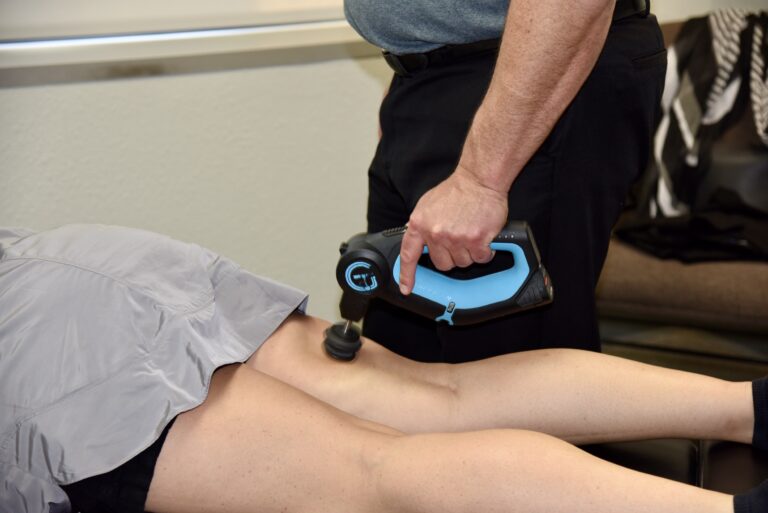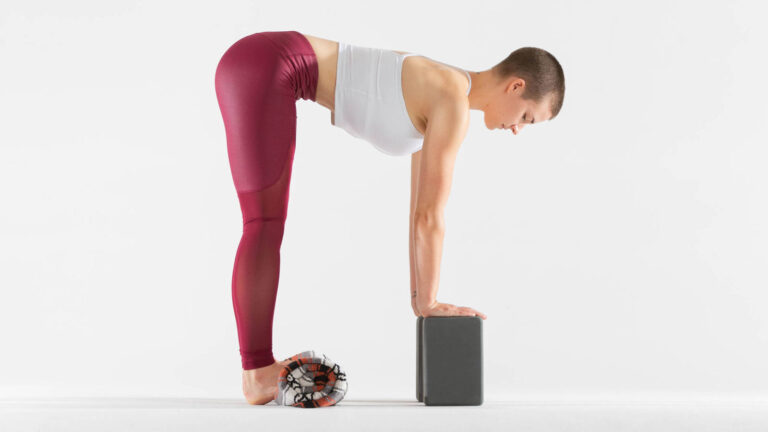REASONS FOR TIGHT CALVES
Have you felt tight calves during your runs and feeling them when you head up a hill? You’re not alone. Tight calf muscles are a typical issue for athletes. Running is an extraordinary way to get in shape, but it can prompt injuries. Being familiar with normal wounds and how to forestall them can keep you on target toward arriving at your wellness objectives.
The tight calf can happen normally as your body responds to the pressure put on the muscles while running. This is referred to as the gastrocnemius and soleus muscles. The common side effects of tight calf muscles are pain, fits, or a “pulling” sensation when you point or flex the foot.

WHAT MIGHT CAUSE TIGHT CALVES?
There are many reasons you can have tight calves. You might feel tight and uncomfortable muscles in your lower legs. Some of the common reasons for tight calf include:
- Cramps: This is a typical cause of the calf muscles feeling tight. A cramp happens when the muscles in the calf suddenly and involuntarily contract without relaxing. Cramps may regularly occur in other leg muscles, including the hamstrings and quadriceps in the thigh.
The reason for cramps is unclear, but some possible reasons include:- Not stretching before activity
- Weak calf muscles
- Lack of minerals or salts
- Muscle fatigue
- Overuse: Overusing the lower leg muscles can prompt snugness. Individuals who habitually practice are at a higher risk of overusing the lower leg muscles. Proceeding to overuse tight calves can prompt more serious wounds.
- Strains: Strains in the calf muscles can cause tightness, pain, and swelling while running. Running can lead to the calf muscles contracting and abruptly lengthening, and this action produces calf strain. In serious cases, a similar activity can cause a tear of the lower leg muscle.
- Achilles tendinitis: Achilles tendinitis alludes to inflammation of the ligament that interfaces your lower leg muscle to your heel. It might occur in the wake of expanding your mileage or the power of your running. Whenever left untreated, Achilles tendinitis expands your risk of breaking your Achilles ligament. If this ligament is torn, it for the most part expects a medical procedure to fix it.
Some of the other potential causes of tight calves include:
- Dehydration
- Side effects of medication
- Peripheral vascular disease
- Reduced blood flow to the calves
- Limited range of motion in the ankle
- Dietary imbalance or deficiency
- Deep vein thrombosis
WHAT ARE THE ACCOMPANYING SYMPTOMS?
Tight calves might feel hard to contact. The muscles might jerk marginally or feel warm from the aggravation. They can be agonizing, especially when under tension.
There can be cramping at times. The cramps will create additional aggravation, in any event, when there is no strain on the calf.

Some of the other symptoms are accompanied by tight calves if the tightness is the result of a strain, overuse, or injury. These might include:
- Swelling and bruising
- Sudden sharp pains
- Difficulty flexing the toes
- Muscle fatigue in the calves
If the pain is extreme in the calves that deteriorate under tension, it is essential to see a specialist right away. These side effects could demonstrate a wrecked bone or serious muscle harm.
HOW TO TREAT TIGHT CALVED DUE TO RUNNING?
Tight calf muscles might prompt over-pronation in which the heel rolls internal as you make a stride. An unfortunate shoe fit and additionally an inappropriately upheld foot curve can likewise do.
While the treatment of tight calf muscles can differ the fundamental reason, extending will in general work on most side effects whenever performed accurately.
For many common running injuries, treatment often includes:
- Practice the RICE Method which includes, rest, ice, compression, and elevation.
- Take over-the-counter nonsteroidal anti-inflammatory drugs (NSAIDs) like aspirin or ibuprofen
- Cutting back on how often and how far you run

In some cases, a specialist could likewise suggest non-intrusive treatment. In more extreme cases, medical procedure is another choice. The medical procedure could be fundamental assuming there is harm to the calf muscle.
While running you shall follow the below basic pieces of advice securely:
- Never rush a stretch: Stretch gradually and hold the stretch for 15 to 30 seconds.
- Try not to extend through pain: If you feel pain during any piece of a stretch, move back and keep up with delicate tension until the muscle unwinds all alone. If the pain perseveres, stop.
- Continuously stretch the two sides: This guarantees your walk is adjusted.
- Never bob while extending: Doing so will expand your risk of a strain or burst.
HOW TO PREVENT TIGHT CALVES FROM RUNNING?
Running injuries can happen to anybody, yet you can limit your risk of injury with the accompanying tips:
- Warm-up: Warm up before you begin running by doing a simple run or dynamic versatility stretches, for example, arm or leg swings for 5 to 10 minutes.
- Increase your running volume slowly: The runners follow the 10% rule, implying that they don’t build their week-by-week volume of running by more than 10% at a time.
- Take care of nagging injuries: You shall rest nagging wounds immediately so they don’t form into more major issues. The physical therapist can give you an appropriate determination and give you customize the treatment plan.
- Work on your technique: Improper running technique can increase the amount of stress on your muscles and joints. Working with a running trainer or in any event, shooting your running strategy can assist you with getting to the next level.

- Strengthen your hips: Your training program should include stability exercises such as glute bridges or single-leg squats to help you protect your knees and ankles.
- Use soft surfaces: Running on grass, elastic tracks, sand, or rock is more straightforward on your joints than running on asphalt. If you’re managing an annoying physical issue, take a stab at running on a delicate surface until your pain subsides.
- Consider cross-training: Adding some low-effect exercises into your timetables, such as cycling or swimming can assist with working on your high-impact wellness while offering your joints a reprieve from the redundant effect of running.
OUTLOOK
Numerous runners manage a physical issue eventually. The most widely recognized regions that support wounds because of running incorporate your knees, legs, and feet. Tight calves can be an indication of one or the other overuse or gentle injury. It very well may be OK to keep practicing assuming there is no restricted scope of movement, pain, or enlarging, yet it is critical to take note that proceeding to exercise can build the risk of injury.
When there is extreme pain that worsens under tension, it very well may be an indication of a more serious physical issue. Contact a specialist promptly in these cases.
If you or anyone you know is suffering from tight calf, our expert providers at Specialty Care Clinics will take care of your health and help you recover.
Call us on (469) 545-9983 to book an appointment with our specialists.
